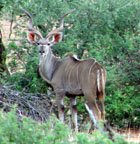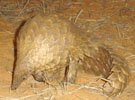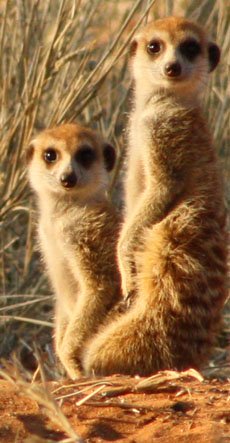For more information about our hunting safaris, don’t hesitate to reach out and contact us!
Lions Killing Hyenas
This video of lions killing hyenas shows that the relationship between hyenas and lions in areas where they coexist is unique in its complexity and intensity.
Lions and hyenas are both apex predators which feed on the same prey, and are therefore in direct competition with one other. As such, they will often fight over and steal each others' kills.
Though it is popularly assumed that hyenas are opportunistic scavengers which profit from the lion's hunting abilities, it is quite often the case that the reversal is true.
Just watch this video!
The feud between the two species does however seem to encompass more than just battles over food.
In the animal kingdom, the territorial boundaries of another species are usually disregarded. Hyenas and lions are an exception to this seeing as they set boundaries against each other as they would against members of their same species.
Male lions are extremely aggressive toward hyenas, and as you have seen in this lions and hyenas video, hunt and kill hyenas without eating them.
Conversely, hyenas are major predators of lion cubs. When attacking adults, hyenas go after groups of females or better yet, a single female. However healthy adult males, even single ones, are generally avoided at all costs.
Did You Know?
- Hyenas have extremely strong jaws in relation to their body size. In 2005, Dr. Brady Barr of the National Geographic measured the bite forces of many different animals, including spotted hyenas for the documentary "Dangerous Encounters: Bite Force".
A one year old hyena cub had a bite measured at 273 kilograms (603 pounds) of force, leading to the postulation that a full grown adult hyena could bite at over 453 kilograms (1,000 pounds)! This mandibular power, combined with its large pyramid shaped molars allows it to easily crush bone, even those of elephants. - An experiment conducted in 1955 showed how the spotted hyena easily outclassed the much larger brown bear in bone crushing ability. It is often asserted in television and print that hyenas have the most powerful bite for their overall body mass when compared to other animals, although there is no scientific basis for this claim.
- They also have a very powerful digestive system with highly acidic fluids. This makes them capable of eating and digesting their entire prey, including skin, teeth, horns, bones and even hooves. This results in them having crusty white droppings, due to the amount of calcium they ingest. The hyenas digestive system is so efficient, it can even derive nourishment from mummified corpses. Undigestible parts are vomited in the form of pellets.
- In the wild, the spotted hyena has an average lifespan of 12 years. In captivity, it can be extended to 25.
Meaning of "Uitspan"
'Uitspan' is an Afrikaans word that means place of rest.
When the Boer settlers moved inland in Southern Africa in the 1800's, they used ox carts. When they found a spot with game, water and green grass, they arranged their ox carts into a circular laager for protection against wild animals and stopped for a rest.
They referred to such an action of relaxation for man and beast, as Uitspan.

(Picture above of our ancestors.)
Did you know? Greater Southern Kudus are famous for their ability to jump high fences. A 2 m (6.56 ft) fence is easily jumped while a 3 m (9.84 ft) high fence is jumped spontaneously. These strong jumpers are known to jump up to 3.5 m (11.48 ft) under stress. |
to read about my experience...
Did you know? Some animals have one sense more than man!The flehmen response is a particular type of curling of the upper lip in ungulates, felids and many other mammals. This action facilitates the transfer of pheromones and other scents into the vomeronasal organ, also called the Jacobson's Organ. Some animals have one sense more than man!The flehmen response is a particular type of curling of the upper lip in ungulates, felids and many other mammals. This action facilitates the transfer of pheromones and other scents into the vomeronasal organ, also called the Jacobson's Organ.This behavior allows animals to detect scents (for example from urine) of other members of their species or clues to the presence of prey. Flehming allows the animals to determine several factors, including the presence or absence of estrus, the physiological state of the animal, and how long ago the animal passed by. This particular response is recognizable in males when smelling the urine of a females in heat. |


